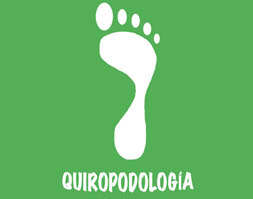Assessment of the curricular design of the program of chiropodiatry specialty
Keywords:
DESIGN, STRATEGY, PROFESSIONS.Abstract
Introduction: curricular design concerning health sciences professions is currently one of the theoretical and practical fields on debate where its importance and general strategies have been considered.
Objective: to evaluate the design of the program of chiropodiatry specialty, considering its relationship with the professional model and the systemic approach of the components of Podiatry specialty into the learning process.
Method: a descriptive research was carried out during the period between December 2015 and January 2016. Theoretical methods such as: historical, analysis-synthesis, and documentary review as empirical were applied, all of them ruled by the materialist-dialectic.
Results: the didactic components of the teaching-learning process are taken into account in the design of the program, as well as its systemic character.
Conclusion: the program of chiropodiatry specialty is relevant since it meets the social demands as well as the main requirements for the training of a high-quality graduate.
Downloads
References
1. Vidal Ledo María J, Salas Perea Ramón Syr, Fernández Oliva Berta, García Merino A L. Educación basada en competencia. Rev Educación Médica Superior, [Internet]. 2016 Ene-Mar; [citado 2017 Feb 1]; 30(1): Disponible en: http://www.ems.sld.cu/index.php/ems/article/view/801/33 5
2. Casanova, Mª A. El diseño curricular como factor de calidad educativa. Revista Iberoamericana sobre Calidad, Eficacia y Cambio en Educación [Internet].2015; [citado 2016 Jul 10]; 10(4).Disponible en: https://scholar.google.com.cu/scholar?start=50&q=dise%C3%B1o+curricular&hl=es&as_sdt=0,5
3. Horruitiner Silva P. El modelo curricular de la Educación Superior cubana. Rev Pedagogía Universitaria [Internet]. 2000 [citado 2015 Jul 10]; 5(3) :Disponible en: http://cvi.mes.edu.cu/peduniv/index.php/peduniv/article/view/162
4. Morán L, Álvarez G .Currículum abierto y flexible: Análisis del caso de una materia universitaria con integración de TIC. Revista Electrónica de Tecnología Educativa [Internet]. 2013 Sep [citado 2015 Jul 10]; 45(3):[Aprox.12p.].Disponible en : http://www.edutec.es/revista/index.php/edutec-e/article/view/11
5. Díaz Corbea A, et al. Formación de Tecnólogos de la Salud. Antecedentes y retos. Revista Cubana de Tecnología de la Salud [Internet]. 2004 sep-dic [citado 2017 jul 04]; 18(4). Disponible en: http://scielo.sld.cu/scielo.php?script=sci_arttext&pid=S0864-21412004000400002
6. Victoreo Cabrera G, et al. Material bibliográfico de Podología Física, para docentes del perfil Podología. Revista Cubana de Tecnología de la Salud [Internet] 2014 [citado 2017 Ene 20];( supl).Disponible en: http://www.revtecnologia.sld.cu/index.php/tec/article/view/288/342
7. Carmenates Loyola L, et al. La medicina herbolarea en el tratamiento del pie diabético. Una necesidad para la formación del podólogo. Revista Cubana de Tecnología de la Salud [Internet]. 2014[citado 2017 Ene 20];( supl). Disponible en: http://www.revtecnologia.sld.cu/index.php/tec/article/view/286
8. Fleitas Ávila A, Valcárcel Izquierdo N, Porto Ramos A G. "Hacia una concepción teórico metodológica de Tecnología de la Salud (I). Revista Cubana de Tecnología de la Salud [Internet]. 2015 [citado 2016 Sep 16]; 6(2): [Aprox.8p.]. Disponible en: http://www.revtecnologia.sld.cu/index.php/tec/article/view/286
9. Rodríguez Gallo M, García Linares G, García González M, Ortega González N, Sánchez Fernández O. Desarrollo de la formación de técnicos y tecnólogos de la Salud en Cuba. Revista Cubana de Humanidades Médicas [Internet]. 2011 [citado 2016 Nov 25]; 11(3):[Aprox.14p.].Disponible en : http://humanidadesmedicas.sld.cu/index.php/hm/article/view/28
10. López López D, et al. Manual de podología: conceptos, aspectos psicológicos y práctica clínica. Revista Cubana de Tecnología de la Salud [Internet]. 2012 [citado 2016 Sep 16]; 1(1). Disponible en: http://www.podologiaeuskadi.com/es/prensa/noticias/manual-de-podologia-conceptos-aspectos-psicologicos-y-practica-clinica
11. Juanes Vilches T, et al. La educación en el trabajo en el perfil de Podología. Revista Cubana de Tecnología de la Salud [Internet]. 2011 [citado 2016 Sep 16]; 1(1):[Aprox.2p.]. Disponible en: http://www.revtecnologia.sld.cu/index.php/tec/article/view/4
12. Gómez Luz M L, et al. Impacto del aprendizaje activo de la Microbiología en el Grado de Podología. Revista Internacional de Ciencias Podológicas [Internet]. 2015 [citado 2016 Dic 16]; 9(1):17. Disponible en: http://revistas.ucm.es/index.php/RICP/article/view/47313
13. Santana Ávila S, et al. La Podología en Cuba: una necesidad demostrada. Revista Cubana de Tecnología de la Salud [Internet]. 2012 [citado 2017 Ene 20]; 3(1):[Aprox.6p.]. Disponible en: http://www.revtecnologia.sld.cu/index.php/tec/article/view/27
14. Herrera Miranda G L, Horta Muñoz D M. La superación pedagógica y didáctica, necesidad impostergable para los profesores y tutores del proceso de especialización. Revista Educación Médica Superior [Internet]. 2016 Jul-Sep [citado 2017 Feb 1]; 30(1). Disponible en: http://www.ems.sld.cu/index.php/ems/article/view/801/33 5
15. Sánchez Sanhueza G A, Cisterna Cabrera F. La evaluación de los aprendizajes orientada al desarrollo de competencias en Odontología. Revista Educación Médica Superior [Internet]. 2014 [citado 2017 Feb 1]; 30(1). Disponible en: http://www.ems.sld.cu/index.php/ems/article/view/801/33%205

Published
How to Cite
Issue
Section
License
Authors who have publications with this journal agree to the following terms: Authors will retain their copyrights and grant the journal the right of first publication of their work, which will be publication of their work, which will be simultaneously subject to the Creative Commons Attribution License (CC-BY-NC 4.0) that allows third parties to share the work as long as its author and first publication in this journal are indicated.
Authors may adopt other non-exclusive license agreements for distribution of the published version of the work (e.g.: deposit it in an institutional telematic archive or publish it in a volume). Likewise, and according to the recommendations of the Medical Sciences Editorial (ECIMED), authors must declare in each article their contribution according to the CRediT taxonomy (contributor roles). This taxonomy includes 14 roles, which can be used to represent the tasks typically performed by contributors in scientific academic production. It should be consulted in monograph) whenever initial publication in this journal is indicated. Authors are allowed and encouraged to disseminate their work through the Internet (e.g., in institutional telematic archives or on their web page) before and during the submission process, which may produce interesting exchanges and increase citations of the published work. (See The effect of open access). https://casrai.org/credit/


